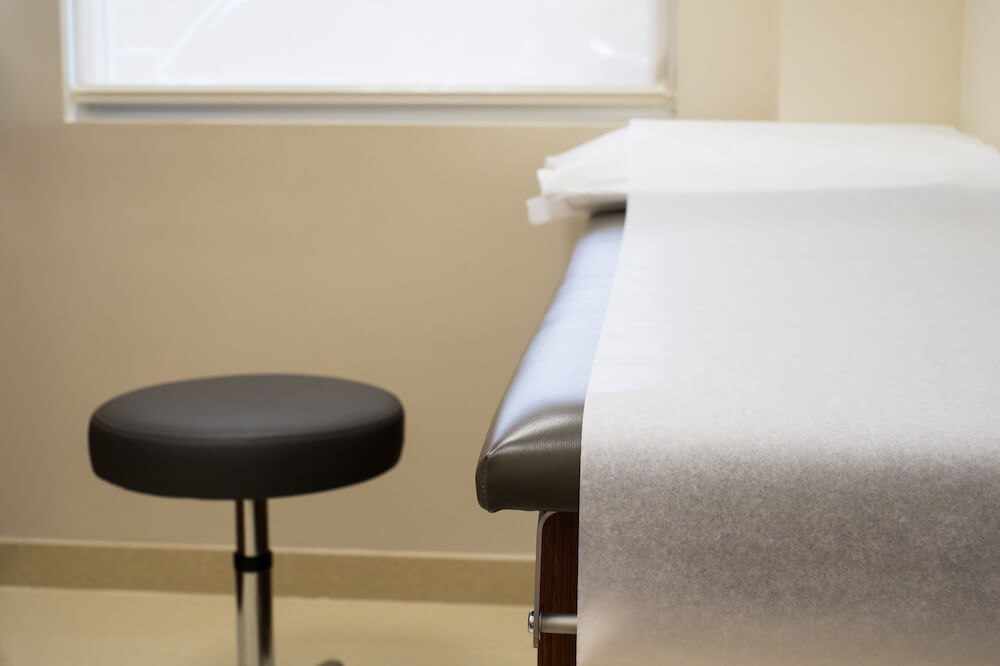Pelvic organ prolapse (POP) also known as vaginal prolapse is a common problem among women of all ages. Prolapse simply means a lack of support or relaxation. Any of the following pelvic organs, the uterus, bladder, urethra, rectum and intestines can prolapse (or fall) out of its normal anatomic position. Fifty percent of women who have had children will have some form of pelvic organ prolapse in their lifetime.
Uterine Prolapse
To preserve the uterus after prolapse, traditional medicine recommends removal, or a hysterectomy. Drs. Miklos & Moore realize it is a woman’s right to make decisions about her uterus and ovaries and will do everything possible to respect the rights and wishes of the woman with respect to her uterus and ovaries. Uterine suspension (Hysteropexy) is now an option for women wishing to maintain or keep their uterus and avoid hysterectomy. The procedure has been shown to be an effective option for the treatment of uterine prolapse.
The laparoscopic hysteropexy may be completed with the patient’s own ligaments (round and uterosacral ligaments) and in certain cases mesh is recommended to increase the cure rate. The laparoscopic mesh hysteropexy procedure involves placing a piece of mesh on the uterus to suspend it to the tailbone, thus giving women the ability to keep their uterus while attempting to restore uterine and vaginal support. The mesh is a stronger substitute for the original uterosacral ligaments, and has a higher cure rate than the patients’ original supportive ligaments.
Vaginal Vault Prolapse (upper 25% of the vagina)
The laparoscopic sacrocolpopexy is the most successful operation ever developed for vaginal vault prolapse and is considered the Gold Standard by all organizations including the American Urogynecologic Society and the FDA for severe vault prolapse. By performing the laparoscopic sacrocolpopexy, Dr. Miklos and Dr. Moore are able to reposition the vagina to its anatomic position using abdominal mesh attached to the vagina and then to the sacrum (tailbone) for anchoring support. This procedure is complex in its nature and requires great expertise for a favorable outcome. Though some people have reservations about using mesh for vaginal vault suspension, Drs. Miklos’ & Moore’s paper on sacrocolpopexy illuminates how rare these complications occur. The sacrocolpopexy is without a doubt the best operation ever developed for uterine and vaginal vault suspension.
Cystocele (bladder) and Urethrocele (urethra and cough leakage)
When a person has a fallen bladder, this simply means that the ceiling of the vagina that holds the bladder in its normal position is broken. Urethrocele often occurs with cystoceles. There are two main types of cystocele repair or surgery for a fallen bladder. The anatomically correct surgical procedure for a fallen bladder (cystocele) is a paravaginal repair. The paravaginal repair is accomplished by using sutures to re-approximate the ceiling of the vagina back to its point of original attachment at the obturator internus muscle. The paravaginal repair will restore the bladder and the urethra to its normal anatomical position. Anterior repairs should be used when the ceiling of the vagina is broken, which is known as midline or central defects. The problem with doing an anterior repair on young, healthy, sexually-active woman with a paravaginal defect (lateral break cystocele) is that the surgeon does not really surgically support the bladder, but instead reduces the bulge by “scrunching” the fascia under the bladder together.
Rectocele (rectum) and Enterocele (intestines)
A rectocele (posterior vaginal prolapse) occurs when there is a break in the rectovaginal septum. The rectovaginal septum or rectovaginal fascia is the supportive layer of the posterior vaginal wall aka vaginal floor. An enterocele is essentially a vaginal hernia in which the peritoneal sac containing a portion of the small bowel extends into the rectovaginal space between the posterior surface of the vagina and the anterior surface of the rectum. Doctor Miklos and Doctor Moore utilize the site-specific posterior repair and add a biologic graft (when necessary). This rectocele repair restores normal anatomy and minimizes the risk of vaginal narrowing or shortening that is common with other traditional posterior repairs.
Pelvic Organ Prolapse of any kind is uncomfortable and dangerous to your health. Contact Doctors Miklos and Moore for more information regarding your condition and the options available to help fix this devastating situation.

